Skinning Workflow Tips & Tricks For Autodesk Maya
Skinning Workflow Tips & Tricks For Autodesk Maya
Tips3D Disclosure: This post may comprise affiliate links. That means if you buy something nosotros get a small commission at no extra cost to you(learn more)
If you're getting into 3D character projects then you'll need to work through skinning at some point.
The process is very technical but practise always makes perfect. That said, some help forth the way is ever keen.
Here are some tips to get you started on the procedure of skinning, specifically with Maya(although tips can employ to mostly whatsoever software). Merely allow's start with a brief introduction…
What is Skinning?
Subsequently modeling your grapheme you need to rig your geometry before you lot tin can kickoff the animation phase.
The rigging phase mostly consists of placing joints, skinning, and building controls.
More often than not, skinning is the process of attaching your model to the joints, and incidentally, to the controls.
Specifically skinning involves assigning each vertex of a model to one or several joints. In other words, without skinning, you can't animate your character.
It also serves as the beginning defence for proper deformation and a deciding gene on how much fourth dimension to dedicate to other deformation.
Along with the joint placement, skinning has a special place in the pipeline as it can't be fully automated. Some algorithms can come up close only no graphic symbol rigs have been shipped into product without artist intervention.
This makes skinning an essential skill for any 3D artist.
And then with that said, let'due south cover some tips and tricks on how to prevent potential issues, speed up your workflow, and troubleshoot skinning issues.
Preliminary Considerations
Like any other pipeline procedure, skinning is highly dependent on its inputs.
Especially, the geometry. Be sure to perform mesh cleanup such as removing unnecessary vertices, merging overlapping vertices, observing proper topology, deleting history nodes and maintaining symmetry on symmetrical characters.
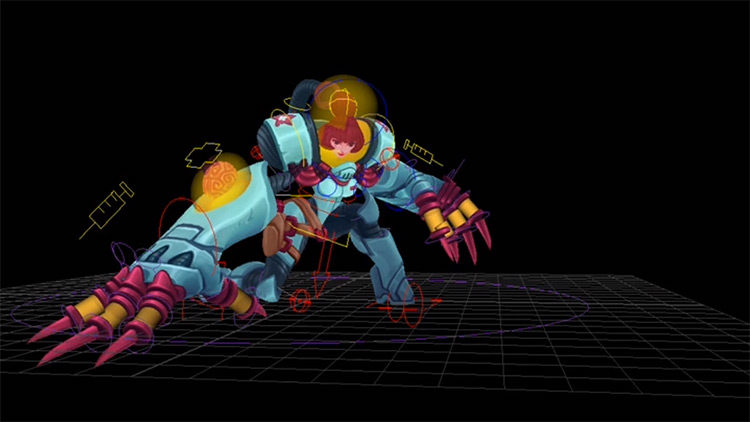
Technically yous can withal skin and eventually animate your character without mesh make clean-up.
The trouble comes in later when you are trying to fine-melody or right some weights.
For instance, having overlapping two vertices means you have to pigment twice. You have the choice to paint through view but this also includes painting the other side of the mesh.
Or if y'all forget to delete history nodes, you'll presently realize that your rig is playing below real-time frame rate as Maya will calculate existing nodes for every frame.
Another important prerequisite is the articulation placement, but this is a Catch-22. You can't make up one's mind what'due south a skilful articulation placement if you lot don't have the skinning. And you can't get skilful skinning if the joint placement is lackluster.
To make matters worse, real-life anatomy joint placement doesn't translate 1 to i to rigging.
A classic instance is a spine. An anatomical spine forms a somewhat S-shape simply if you follow this design with a 3D character, you'll end upwardly with a limited range of motion since a joint will already be biased to another side.
This is why you'll meet the spine joints of character to exist almost straight with little to no curves.
The way around this conundrum is trial by fire.
Identify joints. Commencement skinning.
Find out your joints are off.
Delete skinning. Move joints. First skinning again.
This makes information technology an iterative procedure, and I am here to tell you lot that information technology'southward totally normal.
In time y'all'll develop a shorthand memory of what works and what doesn't. Until and so, accommodate mistakes on your schedule.
Now let's discuss the actual skinning workflows.
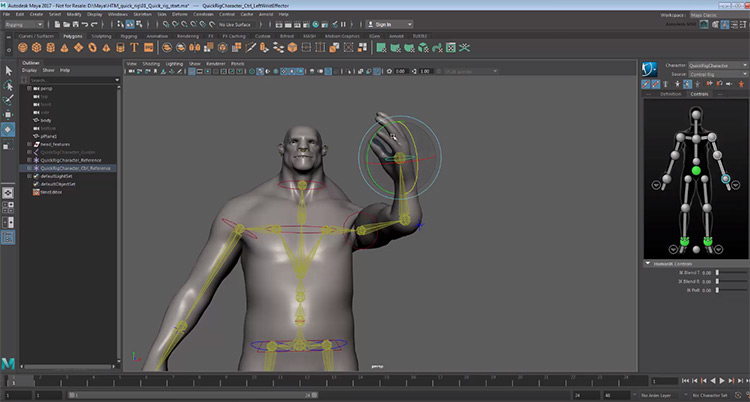
Proceed Maximum Joint Influence to a Minimum
The maximum joint influence is a known requirement for game character rigs.
However information technology'due south actually a skillful workflow for every type of production.
In perspective, if you alter from four to 5 articulation influence you are non necessarily increasing the overhead by 25% but probably making it twice as circuitous as before since it'south volition be harder to maintain and debug.
You can gear up the Maximum Joint Influence nether skinCluster Node > Smooth Peel Attributes > Maintain Max Influences.
In most cases you don't need more than than four articulation influence for a vertex. Just if y'all demand more then maybe it'southward fourth dimension to consider having a defended blendShape deformer much the aforementioned way with facial rigs.
Maintain a Base Weight
No matter how complicated, every character almost e'er starts or comes with a base mesh. Which is just another term for the naked version of the character.
This naked mesh serves as a practiced foundation to gear up-up a base weight as it will probably cover the whole grapheme in proximity.
Y'all'll reap the benefit of the base weight when you lot volition encounter multiple types of clothing (say a jacket and a shirt).
Instead of starting from scratch, you can pull the weights from the base of operations weight using the Copy Peel Weights Command and merely spend almost of your time polishing.
Isolate Skinning Commands through Selection
If you lot execute whatsoever skinning commands under the skin menu, by default, information technology will exist practical to the whole mesh.
Yous can isolate the event of the command by going to the component mode, selecting the afflicted vertices and running the control.
There'due south no need for additional parameters or vertex/influence maps. It merely works.
This comes in handy when you lot are mirroring weights with a grapheme that has symmetrical and asymmetrical parts.
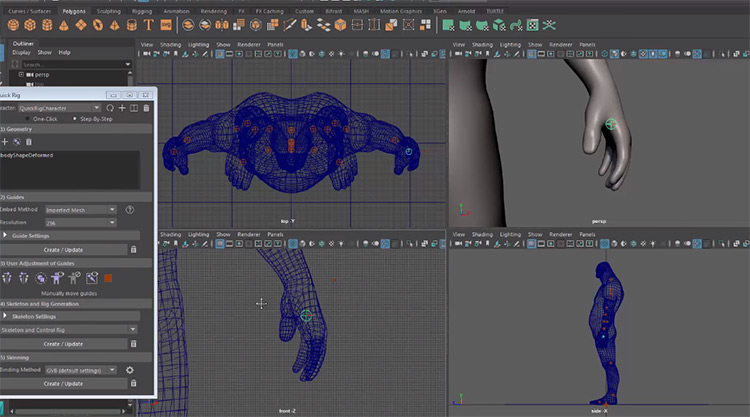
Use the Stable Import/Export Weights
This is i of the common mistakes we meet beginners make.
Maya comes with two options to import and export weights:
(A) Skin Carte du jour > Consign/Import Weight Maps, and
(B) Deform Carte > Export/Import Weights.
At outset glance information technology seems similar the quondam would be preferred given it's under the Skin Card. The onetime uses an paradigm map to manipulate the weights which means the quality depends on the resolution of the map.
The latter is a more robust method as it uses exact bladder values to map weights.
You tin likewise check Brave Rabbit's Plug-in based on the same algorithm for a streamlined workflow.
With the native command you'd take to identify the joints, reskin the mesh, and striking import weights. With the plug-in just select the mesh and import the weights.
The plug-in will automatically skin the mesh to the existing joints. This is incredibly handy if y'all don't take a list of joints stored.
Use the Marking Menu
A typical workflow in painting weights(the primal task in skinning) is selecting the geometry, switch to paint peel weights tool, select the corresponding joint in the weight manager, and so begin painting.
The problem comes when you have to bargain with more than xx joints.
Which is often the instance for biped characters because the weight manager doesn't show all the joints. You'd have to go along scrolling until you lot find the articulation.
A better way is to use the marking carte du jour.
In the viewport hover over the joint, striking RMB, a marking carte du jour appears so click Select Influence.
Note that marking menus are different based on the active tool and the object.
And so if you don't see the option, you might not be using the paint skin weights tool or you are not directly hovering over a joint.
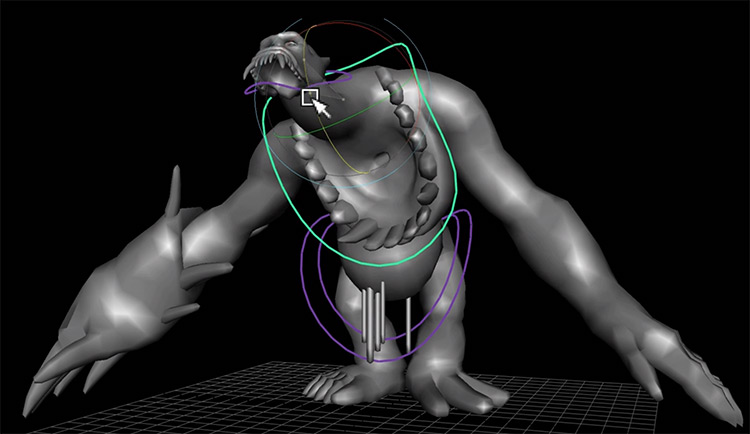
Consider Weight Blended
A common limitation in skinning is the way it interpolates deformation.
By default, when you rotate past a given angle the mesh will lose volume, collapse, and wrap itself. To mitigate this Maya introduced the dual quaternion.
However, it presents another problem.
While it works well for rotation-based joints, it also introduces anomalies for both rotation and translation-based joints.
This is where Weight Blended comes in where you lot specify which parts are linear and which parts are dual quaternion.
Yous can do this with the Paint Skin Weights Tool and alter the Weight Type from Skin Weight to DQ Blend Weight.
Mind your Weights when Smoothing
It's more often than not a consensus that Maya needs to improve their smoothing algorithm.
If you are trying to smooth weights between forearm and wrist joints, you'd exist surprised to larn that some of these weights are transferred to other joints indiscriminately.
This means when you move your manus, there are chances that the head is moving too.
To prevent this you demand to lock all joints and unlock the joints you are currently working on.
It works, but it'southward cumbersome since you have to practice this routine every time you smooth another ready of joints.
Here I'd besides recommend using Brave Rabbit's plugin where information technology only smooth/assign weights within the range of the brush.
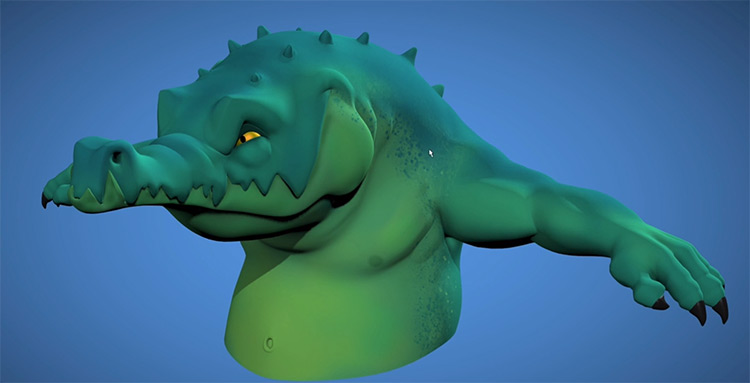
In other words, you don't need to dance betwixt locking and locking your joints.
Another handy plug-in is the NgSkin Tools where you paint in layers and merely blend them for the final skinning. This makes the complicated areas, such equally the shoulder region, easy to manage.
Bank check the Range of Motion
The true test of your skinning talent is when the character is existence animated.
Luckily you don't demand to exist an animator to perform this.
Yous can utilize a motion capture skeleton and retarget it to your character. Mixamo provides a broad array of motion capture from a simple sitting down to a complicated breakdown dancing.
This is a good way to check your character's reasonable range of motion, verify its limitation, and eventually reduce the total revision notes that you'll go from animators.
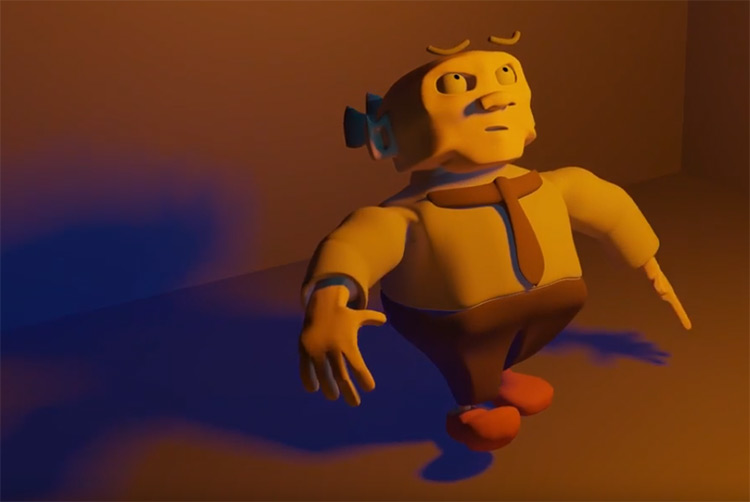
Determination: Know The Limits Of Skinning
While information technology represents a substantial portion of modernistic 3D work, skinning is not the simply way to accomplish deformation.
Y'all'll most likely use complicated set-ups such as pose-spaced deformation supplemented with correctional sculpts.
Cartoony deformations are besides more than suited to defended deformers such as FFD and squash and stretch deformers.
While this might brand skinning restrictive, it'south really liberating for a technical CG artist.
This means you tin can focus on what works all-time for the pare deformer and leave the other deformation to other deformers. In this set-up, information technology will easier to revise, maintain, and debug.
Only proceed practicing and find the best workflow that suits your needs.
montoyathrervoich.blogspot.com
Source: https://conceptartempire.com/skinning-workflow-tips-maya/
0 Response to "Skinning Workflow Tips & Tricks For Autodesk Maya"
Post a Comment